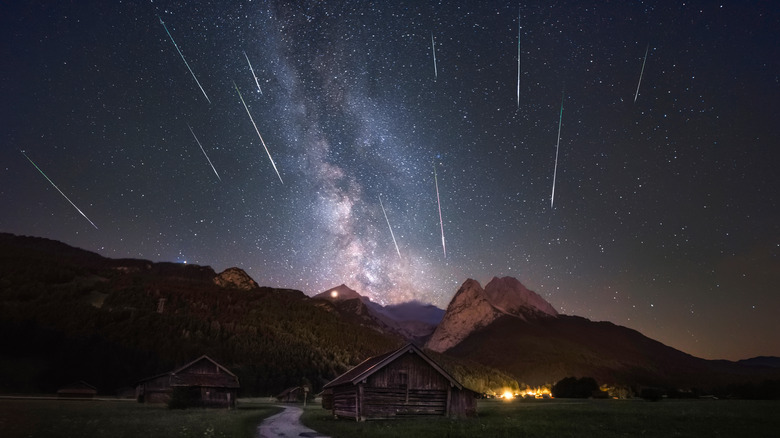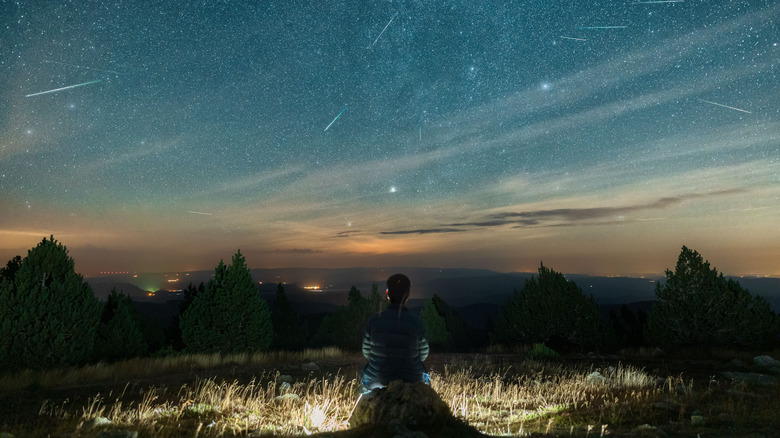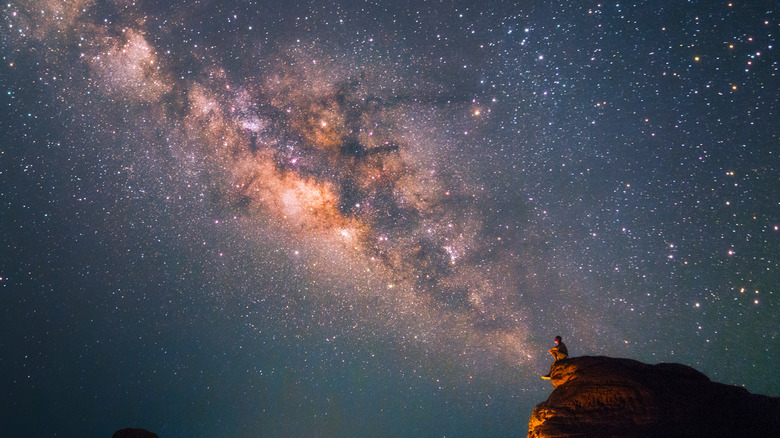How To Increase Your Chances Of Seeing A Shooting Star
Few cosmic events inspire a sense of wonder about the universe like shooting stars. Rarely do they fail to impart a feeling of having witnessed something special and fleeting as they etch their final signature in light across the night sky while raining down from above.
Shooting stars are meteors — bits of iron or stone (or both) ranging in size from dust particles to vehicle-sized rocks — that enter Earth's atmosphere and burn up on their way down. If one survives the trip to the ground, it then gets classified as a meteorite. Not to be confused with comets (frozen bits of dust, rock, and ice that orbit the Sun) or asteroids (space rocks that can be up to hundreds of miles long), meteors are simply the small rocks in space that get vaporized when they enter the atmosphere.
Meteors have a long history of influencing how the world's cultures view themselves and the world around them. To the ancient Greeks and Romans, they were fateful messengers bearing either good or ill; to the Balkan states of Eastern and Southern Europe, they signified an individual's escape from captivity or their demise (via WGN, Journal of the International Meteor Organization). But despite their significance in our minds and cultures for their rarity, catching shooting stars isn't as elusive or difficult a task as you might think. With the proper knowledge and preparation, you can significantly increase your chances of seeing one.
Ideal shooting star locations and conditions
As they say in business, location is everything. Light pollution from urban areas can wash out all but the brightest meteors, so your best bet is to head out to the countryside or any remote location that will keep artificial light sources to an absolute minimum. Highly populated cities are non-starters, but remember that light from traffic can also influence how well you can see the night sky.
National parks or camping sites tend to be solid options for stargazing, and websites and apps like Dark Site Finder and Light Pollution Map are excellent resources to plan your next stargazing trip. You'll also want to keep an eye on the phases of the moon. While a full moon is a beautiful sight, its luminosity can wreck your chances of catching any meteors. And, of course, a cloudy sky will put an end to even the most dazzling meteor shows, so check the weather forecast regularly in the run-up to your stargazing night.
It's important to note that not all meteor showers are created equal. Some are known for their productive hourly rate — the number of shooting stars you can expect to see in an hour during a meteor shower's peak. The Perseids, for example, a meteor shower that peaks every year in August, is one of the most popular and beloved shooting star showouts there is. In ideal conditions, the Perseids can rain down at a rate of 50 to 80 meteors in a single hour. Planning your stargazing around such well-known astronomical events is always a good idea. Thankfully, plenty of these kinds of meteor showers occur yearly, with the Orionids, Geminids, and Quadrantids being among the most notable.
Plan ahead and come prepared
One of the best things you can do to ensure you don't miss out on any shooting stars once you do get to your viewing spot is to make sure you've come prepared. The best lighting conditions in the world won't help you spot meteors if you're uncomfortable or distracted, so do your research. What is the weather going to be like? What kind of gear will you need? How long are you planning on being out at night?
Craning your neck up at the sky for more than a few minutes at a time is a surefire way to ruin your evening, so opt for a reclining chair or lying down on a blanket for the best view of the stars. Having some warm clothes as a backup is never a bad option, even in summer, as temperatures can drop significantly at night, especially if you're in a desert environment.
And be sure to stay mindful about the kinds of light sources you bring along. Red-colored flashlights, for example, are known to be less distracting and harmful to a person's night vision, so consider equipping yourself with one ahead of time. It can take up to half an hour for the human eye to fully adjust to seeing in the dark, so be careful about what light you're using and when. If you keep these tips in mind and don't mind exercising a bit of patience, you'll be well on your way to enjoying a cosmic show of shooting stars in no time.


